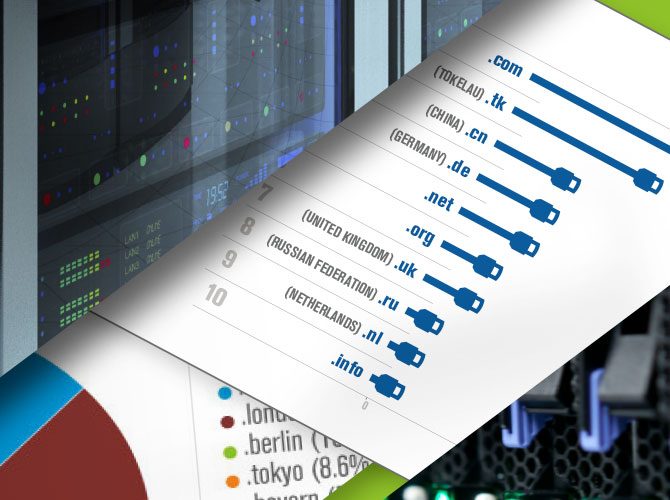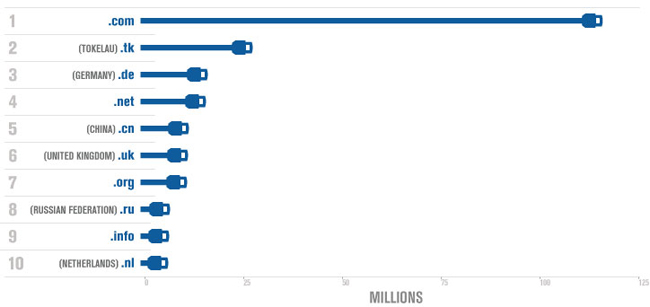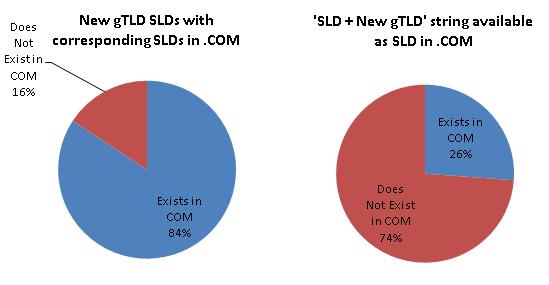
Call for Participation: Registration Operations Workshop at IETF-92
The next Registration Operations Workshop will take place at the start of IETF-92 on Sunday, March 22, 2015, at The Fairmont Dallas Hotel. The workshop will start at 12:30 p.m. CDT and will finish at 4:30 p.m. CDT. We are seeking proposals for Extensible Provisioning Protocol (EPP) extensions to be featured as part of the workshop, including existing extensions that people wish to register with the Internet Assigned Numbers Authority (IANA) and new extensions that people wish to consider for further development.
Have you developed custom EPP extensions in your registry? Please submit a proposal to describe your extension. Facilities for remote participation will be provided.

Meet our #InternetOfficial Contest Judge and Naming Expert Steve Manning
As we celebrate the 30th anniversary of .com in 2015, we are excited to partner with a stellar group of industry experts, who will serve as judges and help us select up to five monthly winners (for a total of 15) and the final, grand prize winner of our #InternetOfficial .com domain name contest.
Our panel would not have been complete without Steve Manning, naming expert and CEO of naming firm Igor. Steve is a prominent naming and branding authority and has spent the last 17 years leading naming projects for some of the most popular brands, including the Aria resort in Las Vegas, the “Cutthroat Kitchen” TV show, Gogo inflight Wi-Fi and TruTV. His clients also include some of the world’s most iconic brands, from Nike and Intel to Bank of America and one of Steve Wynn’s signature hotels, the Wynn Las Vegas.

Get to Know #InternetOfficial Contest Judge and SMB Expert Anita Campbell
It’s time to celebrate the Internet’s most recognized domain name – .com – and its 30th anniversary! Verisign recently launched the #InternetOfficial contest, where contestants can enter by registering an original, memorable and keyword-rich .com name through a participating registrar and then visiting either VerisignInternetOfficial.com to complete and submit the contest entry form for that newly registered .com domain name, all during the contest entry period.* Then, a panel of top industry influencers and celebrity judges, including Founder, CEO and Publisher of Small Business Trends Anita Campbell, will help determine the five best .com domain names entered into the contest each month during the contest’s three-month entry period, as well as the winner of the $30,000 grand prize.

Meet our #InternetOfficial Contest Judge and Domain Expert Michael Berkens
We kicked off the #InternetOfficial contest on Monday to celebrate the 30th anniversary of .com and fuel up to 15 lucky entrepreneurs’ dreams to start their own business on a .com domain name. Now that you are well aware of how to enter the contest, we wanted to introduce you to the panel of judges who will be helping to choose up to five monthly winners (for a total of 15) and the final, grand prize winner over the course of the contest.
Meet domain expert Michael H. Berkens! Michael is one of the most well-known and prominent investors and bloggers in the domain industry. He was awarded Domainer of the Year in 2009 and is a member of the Domain Hall of Fame. Michael has been quoted on the domain industry in The Wall Street Journal, The New York Times, USA Today and Bloomberg, TheRegister.co.uk as well as many other technology, domain and legal publications. His evaluation and development expertise has also been tapped in several of the highest profile domain sales and auction events in recent years.

Internet Grows to 284 Million Domain Names in the Third Quarter of 2014
Today, we released the latest issue of the Domain Name Industry Brief, which showed that the Internet grew by four million domain names in the third quarter of 2014. The total number of domain names across all top-level domains (TLDs) is now 284 million. This is a 1.6 percent increase over the second quarter of 2014. [1]
Largest TLDs by Zone Size


Where Do Old Protocols Go To Die?
In Ripley Scott’s classic 1982 science fiction film Blade Runner, replicant Roy Batty (portrayed by Rutger Hauer) delivers this soliloquy:
“I’ve…seen things you people wouldn’t believe…Attack ships on fire off the shoulder of Orion. I watched C-beams glitter in the dark near the Tannhäuser Gate. All those…moments…will be lost in time, like (cough) tears…in…rain. Time…to die.”
The WHOIS protocol was first published as RFC 812 in March 1982 – almost 33 years ago. It was designed for use in a simpler time when the community of Internet users was much smaller. WHOIS eventually became the default registration data directory for the Domain Name System (DNS). As interest in domain names and the DNS has grown over time, attempts have been made to add new features to WHOIS. None of these attempts have been successful, and to this day we struggle with trying to make WHOIS do things it was never designed to do.

Verisign OpenHybrid™: An Essential New Approach to DDoS Protection
Distributed Denial of Service (DDoS) attacks are a threat to businesses worldwide and the attacks are getting larger and more sophisticated. The industry’s approach to protecting against DDoS attacks must change, and change fundamentally, to stay ahead of this growing threat.
For too long, the problem has been tackled piecemeal, using isolated devices or services. But protecting against DDoS attacks increasingly requires communication and coordination between many components – from networking equipment, to specialized appliances and cloud-based services.
A shift in security architecture is needed to an open platform where devices and services from different vendors can share and act on information in concert. It must be a hybrid platform, allowing on-premise routers and security appliances to detect and mitigate attacks locally, while automating alerting and switchover to cloud-based services if an attack threatens to swamp the business’ network connection.

What’s Really New in the New gTLD Space?
As someone who has long studied trends in the domain name industry, the opening of hundreds of new gTLDs has intrigued me for quite some time on many levels. One question I found myself pondering was: Will new gTLDs create “new” naming trends or redundant domains across many TLDs? With more than 3 million domains delegated in the new TLD space there is now a corpus to study to answer this question.
The short answer is clear from these first two pie charts which illustrate the percentage of the second-level domains (SLDs) that were available in .com as of 12/15/2014:


New from Verisign Labs: What’s in your attack surface?
 Recently, Verisign Labs researcher Eric Osterweil and Verisign CSO Danny McPherson, along with Lixia Zhang, a professor of computer science at UCLA, received the Best Paper Award at this year’s IEEE Workshop on Secure Network Protocols (NPSec ‘14) for their paper, “The Shape and Size of Threats: Defining a Networked System’s Attack Surface.” Below is a guest post from one of the authors, Eric Osterweil, principal researcher for Verisign Labs, describing the genesis of the research and future plans.
Recently, Verisign Labs researcher Eric Osterweil and Verisign CSO Danny McPherson, along with Lixia Zhang, a professor of computer science at UCLA, received the Best Paper Award at this year’s IEEE Workshop on Secure Network Protocols (NPSec ‘14) for their paper, “The Shape and Size of Threats: Defining a Networked System’s Attack Surface.” Below is a guest post from one of the authors, Eric Osterweil, principal researcher for Verisign Labs, describing the genesis of the research and future plans.
Domain Registrations: Is Bitcoin Going Mainstream?
Earlier this year we used Bitcoin as an example of how domain registrations could be an effective gauge of interest in a particular subject. Our analysis demonstrated a clear rise in the number of registered .com and .net domain names containing the term “Bitcoin” in 2013, as well as a positive correlation between increased registration activity and increases in the dollar value of bitcoin.
In this post, we decided to take a look at the history of Bitcoin-related domain registration activity since 2009 to see if we noticed any other trends.